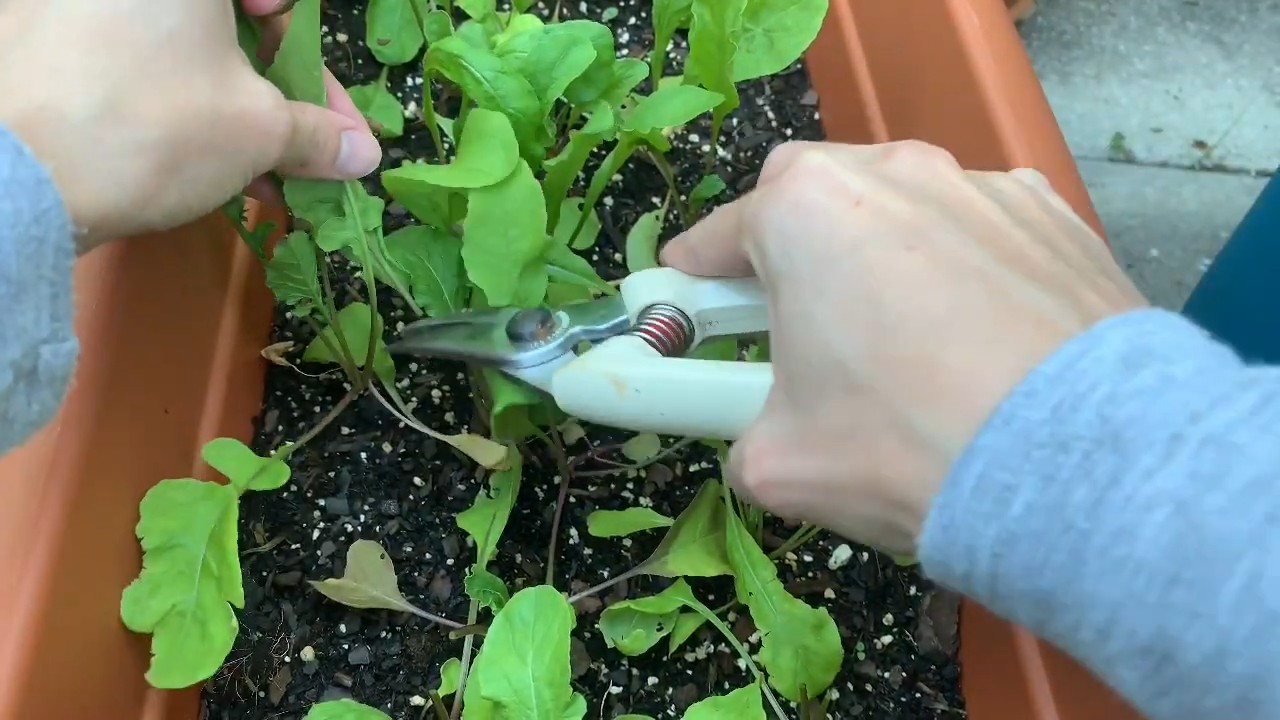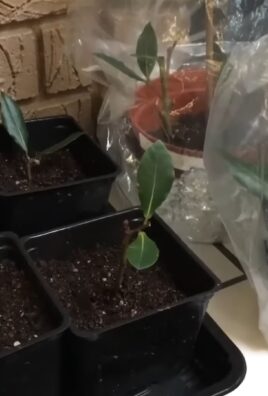Grow Arugula at Home and unlock a world of peppery freshness right outside your door! Forget those limp, pre-packaged greens from the grocery store. Imagine stepping into your garden and snipping vibrant, flavorful arugula leaves whenever you need them. This isn’t just a dream; it’s an easily achievable reality with a few simple DIY tricks.
Arugula, also known as rocket, has a rich history dating back to Roman times, where it was prized for its distinctive taste and believed to be an aphrodisiac. From ancient feasts to modern salads, this leafy green has consistently delighted palates. But why rely on store-bought options when you can cultivate your own thriving arugula patch?
In today’s world, where fresh, healthy ingredients are more valued than ever, knowing how to grow arugula at home is a game-changer. Not only will you have access to organic, pesticide-free greens, but you’ll also save money and reduce your environmental footprint. Plus, gardening is a fantastic stress reliever! I’m excited to share some easy-to-follow DIY hacks that will have you harvesting delicious arugula in no time, even if you have limited space or gardening experience. Let’s get started!

Growing Arugula at Home: Your DIY Guide for Crisp Salad
I love arugula, also known as rocket! This peppery, nutty green is so versatile—whether in a salad, on pizza, or as a pesto. And the best part? You can easily grow it at home! I’ll show you how to start your own arugula garden with simple tools and without much effort.
What you need:
- Arugula seeds (rocket seeds)
- Seed-starting mix or high-quality potting soil
- Pots or planter boxes (with drainage holes!)
- Watering can or spray bottle
- A sunny location (at least 6 hours of sun per day)
- Optional: Grow light (if you don’t have a sunny spot)
- Optional: Fertilizer for leafy greens (organic preferred)
- Optional: Mulch (e.g., straw or wood chips)
Sowing: The Start of Your Arugula Garden
- Prepare the pots/planter boxes: Fill your pots or planter boxes with seed-starting mix or potting soil. Make sure the soil is loose and well-draining. Press the soil down lightly, but not too firmly.
- Sow the seeds: Arugula seeds are very small. Sprinkle them evenly over the surface of the soil. You can also sow them in rows if you prefer. The distance between rows should be about 5-7 cm (2-3 inches).
- Cover the seeds: Cover the seeds with a thin layer of soil (about 0.5 cm / 0.2 inches). The seeds need light to germinate, so don’t cover them too deeply.
- Water: Gently moisten the soil with a watering can or spray bottle. The soil should be damp, but not wet. Avoid washing the seeds away.
- Location: Place the pots or planter boxes in a sunny location. Arugula needs at least 6 hours of sun per day. If you don’t have a sunny spot, you can use a grow light.
- Germination: The seeds usually germinate within 5-10 days. Keep the soil moist during germination.
Care: So Your Arugula Grows Magnificently
- Watering: Arugula needs regular watering, especially in warm weather. The soil should always be slightly moist. Avoid waterlogging, as this can lead to root rot. I usually water my arugula plants every other day, but of course, this depends on the weather.
- Thinning: When the seedlings are about 2-3 cm (1 inch) tall, you should thin them out. This means removing some of the plants so that the remaining ones have enough space to grow. The distance between plants should be about 5-7 cm (2-3 inches).
- Fertilizing: Arugula is not very demanding, but occasional fertilizing can promote growth. Use an organic fertilizer for leafy greens. I fertilize my arugula plants every 2-3 weeks with a diluted liquid fertilizer.
- Weed control: Regularly remove weeds that grow in the pots or planter boxes. Weeds can steal nutrients and water and hinder the growth of the arugula plants.
- Pest protection: Arugula can be infested by various pests, such as flea beetles or aphids. Check the plants regularly for pests. If necessary, you can use biological pesticides. I have had good experiences with neem oil.
- Mulching: A layer of mulch can help retain moisture in the soil and suppress weeds. Use straw or wood chips as mulch.
Harvest: The Reward for Your Effort
- Harvest time: You can harvest arugula as soon as the leaves are about 5-7 cm (2-3 inches) long. The leaves are most tender and have the best flavor at this stage.
- Harvesting method: Cut the leaves with scissors or a knife. You can either harvest individual leaves or whole plants. If you only harvest individual leaves, the plants can continue to grow, and you can harvest multiple times.
- Storage: Arugula does not last very long. It’s best to use it immediately after harvesting. However, you can store it in the refrigerator for a few days. Wrap the leaves in a damp paper towel and place them in a plastic bag.
Common Problems and Solutions
- Yellow leaves: Yellow leaves can be a sign of overwatering, nutrient deficiency, or pest infestation. Check your watering, fertilize the plants, and inspect them for pests.
- Bitter taste: If arugula grows for too long, it can become bitter. Harvest the leaves in a timely manner, before they get too large. Too much sun can also affect the taste.
- No germination: If the seeds don’t germinate, it could be due to soil that is too dry, sowing too deep, or poor seed quality. Keep the soil moist, don’t sow the seeds too deep, and use fresh seeds.
Growing Arugula in Winter
You don’t have to go without fresh arugula in winter! With a few tricks, you can grow it even in the cold season:
- Indoor growing: Place the pots or planter boxes in a bright spot indoors or use a grow light.
- Heated greenhouse: If you have a heated greenhouse, you can also grow arugula there.
- Cold-tolerant varieties: There are arugula varieties that are more cold-tolerant than others. Inquire at a specialty store.
Arugula Varieties: Diversity for Your Garden
There are different arugula varieties that vary in taste, leaf shape, and size. Here are some popular ones:
- Wild Arugula (Diplotaxis tenuifolia): Has a more intense, peppery flavor than cultivated varieties.
- Cultivated Arugula (Eruca sativa): Milder in taste and with larger leaves.
- ‘Rocket’: A popular cultivated variety with a nutty, peppery taste.
- ‘Wasabi’: Has a sharp, wasabi-like flavor.
Arugula in the Kitchen: Versatile Uses
Arugula is incredibly versatile and can be used in many different dishes:
- Salads: Arugula is a great addition to any salad, giving it a peppery note.
- Pizza: Sprinkle fresh arugula over the pizza after baking.
- Pesto: Arugula pesto is a delicious alternative to basil pesto.
- Pasta: Mix arugula into pasta dishes.
- Soups: Add arugula to soups just before serving.
- Sandwiches: Top sandwiches with arugula.
Additional Tips for Growing Arugula
- Crop rotation: Do not grow arugula in the same spot every year to prevent diseases and pests.
- Companion planting: Arugula gets along well with other vegetables like carrots, radishes, and lettuce.
- Saving seeds: If you wish, you can save seeds from your arugula plants. Let some plants flower and the seeds ripen. Collect the seeds when they are dry.
I hope this guide helps you start your own arugula garden! It’s really simple and rewarding to have fresh, homegrown arugula.

Conclusion
So, there you have it! Growing arugula at home is not only achievable, but it’s also incredibly rewarding. Imagine stepping out into your garden or even just reaching for a pot on your windowsill to harvest fresh, peppery arugula leaves whenever you need them. No more last-minute trips to the grocery store or settling for wilted, pre-packaged greens. This DIY trick empowers you to have a constant supply of this delicious and nutritious leafy green, all while saving money and reducing your environmental impact.
But why is this a must-try? Beyond the convenience and cost savings, growing your own arugula allows you to control the quality of what you’re eating. You know exactly what goes into your plants – no harmful pesticides or herbicides, just pure, natural goodness. Plus, the flavor of homegrown arugula is simply unmatched. It’s more vibrant, more peppery, and more intensely flavorful than anything you can buy in a store.
Ready to take your arugula game to the next level? Consider these variations:
* **Succession Planting:** Plant new seeds every two to three weeks for a continuous harvest throughout the growing season. This ensures you always have a fresh supply of arugula ready to pick.
* **Container Gardening:** If you’re short on space, arugula thrives in containers. Choose a pot that’s at least 6 inches deep and wide, and use a well-draining potting mix.
* **Microgreens:** Harvest your arugula seedlings as microgreens for an even more intense flavor and a boost of nutrients. Simply snip the tiny leaves when they’re about an inch tall.
* **Companion Planting:** Arugula grows well alongside other vegetables like carrots, radishes, and lettuce. These companion plants can help deter pests and improve the overall health of your garden.
* Experiment with Varieties: Don’t be afraid to try different varieties of arugula! Some are spicier than others, while some have a milder, more nutty flavor. Explore your options and find your favorite.
We’re confident that once you try growing arugula at home, you’ll be hooked. It’s a simple, satisfying, and delicious way to connect with nature and enjoy fresh, healthy food. So, grab some seeds, find a sunny spot, and get ready to experience the joy of homegrown arugula.
We’d love to hear about your experiences! Share your tips, tricks, and photos in the comments below. Let’s create a community of arugula enthusiasts and inspire others to try this amazing DIY trick. What are you waiting for? Start growing arugula at home today!
Frequently Asked Questions (FAQ)
What is the best time of year to plant arugula?
Arugula is a cool-season crop, which means it thrives in cooler temperatures. The best time to plant arugula is in early spring or late summer/early fall. In the spring, plant as soon as the soil can be worked. For a fall harvest, plant about 4-6 weeks before the first expected frost. Avoid planting during the hottest months of summer, as the heat can cause the leaves to become bitter and bolt (go to seed).
How much sunlight does arugula need?
Arugula prefers full sun, which means at least 6 hours of direct sunlight per day. However, it can also tolerate partial shade, especially in hotter climates. If you’re growing arugula indoors, place it near a sunny window or use a grow light to provide adequate light. Insufficient sunlight can result in leggy, weak plants with less flavorful leaves.
What kind of soil is best for growing arugula?
Arugula prefers well-draining soil that is rich in organic matter. The ideal soil pH is between 6.0 and 7.0. Before planting, amend the soil with compost or other organic matter to improve drainage and fertility. If you’re growing arugula in containers, use a high-quality potting mix that is specifically formulated for vegetables. Avoid using heavy clay soil, as it can become waterlogged and lead to root rot.
How often should I water arugula?
Arugula needs consistent moisture to thrive. Water regularly, especially during dry periods. The soil should be kept consistently moist, but not waterlogged. Check the soil moisture by sticking your finger about an inch into the soil. If it feels dry, it’s time to water. Avoid overhead watering, as this can promote fungal diseases. Instead, water at the base of the plants.
How do I harvest arugula?
Arugula can be harvested as soon as the leaves are large enough to eat, typically about 3-4 weeks after planting. You can harvest individual leaves or cut the entire plant back to about an inch above the soil. If you cut the entire plant back, it will regrow, providing you with multiple harvests. Harvest arugula in the morning, when the leaves are crisp and flavorful.
Why is my arugula bolting (going to seed)?
Bolting is a common problem with arugula, especially in hot weather. When arugula bolts, the leaves become bitter and the plant produces a flower stalk. To prevent bolting, plant arugula in early spring or late summer, provide shade during the hottest part of the day, and keep the soil consistently moist. If your arugula does bolt, you can still harvest the leaves, but they will be more bitter. You can also allow the plant to flower and collect the seeds for future planting.
What are some common pests and diseases that affect arugula?
Arugula is generally a pest-resistant plant, but it can be susceptible to certain pests and diseases, such as flea beetles, aphids, and downy mildew. Flea beetles are small, jumping insects that can chew holes in the leaves. Aphids are small, sap-sucking insects that can cause the leaves to become distorted and yellow. Downy mildew is a fungal disease that can cause white or gray patches on the leaves. To prevent pests and diseases, practice good garden hygiene, such as removing weeds and debris, and water at the base of the plants. If you do encounter pests or diseases, you can use organic pest control methods, such as insecticidal soap or neem oil.
Can I grow arugula indoors?
Yes, arugula can be grown indoors, especially if you have a sunny window or a grow light. Choose a pot that is at least 6 inches deep and wide, and use a well-draining potting mix. Place the pot near a sunny window or under a grow light, and water regularly. You may need to fertilize your arugula plants more frequently when growing them indoors, as they will not have access to the nutrients in the soil.
How do I store harvested arugula?
To store harvested arugula, wash the leaves thoroughly and dry them with a salad spinner or paper towels. Store the arugula in a plastic bag or container in the refrigerator. Arugula will typically last for about 5-7 days in the refrigerator. For longer storage, you can freeze arugula. To freeze arugula, blanch the leaves in boiling water for 2 minutes, then plunge them into ice water. Drain the leaves and squeeze out any excess water. Store the blanched arugula in freezer bags or containers.
Is arugula good for you?
Yes! Arugula is a very nutritious leafy green. It’s low in calories and high in vitamins and minerals, including vitamin K, vitamin A, vitamin C, folate, and calcium. Arugula is also a good source of antioxidants, which can help protect your body against damage from free radicals. Adding arugula to your diet can help improve your overall health and well-being.





Leave a Comment